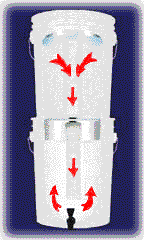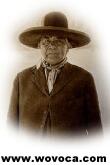|
||||||||||||||||||
Press CTRL+D to bookmark this page! |
||||||||||||||||||
 |
||||||||||||||||||
| Click here for
EarthMotherCrying Wallpaper |
||||||||||||||||||
The Murder of John Paul I ? |
||||||||||||||||||
|
||||||||||||||||||
|
||||||||||||||||||
|
|
||||||||||||||||||
|
||||||||||||||||||
|
||||||||||||||||||
|
||||||||||||||||||
|
||||||||||||||||||
The Murder of John Paul I ? [This is an edited version of a piece appearing in Apokalypso. The information contained in the original article is very well documented.] To understand the forces at work in the sudden death of Pope John Paul I in 1978, we should first back up a bit in time to the 19th Century, when the Church was stripped of its sovereign power in the Papal States by the Italian national revolution. As a result, after 1870 the Pope became the pathetic "Prisoner of the Vatican." Perhaps to compensate for the loss of his earthly kingdom, Pope Pius IX (1846-1878) convoked Vatican Council I with the purpose of promulgating the doctrine of papal infallibility. For his role in delivering the Italian nation into the bloody hands of Mussolini, Pope Pius XI (1922-1939) received the equivalent of $80 million ($500 million in today's dollars) and restoration of the papacy's temporal sovereignty in Vatican City under the terms of the Lateran Treaty of 1929. Pius and his successors would exploit this treaty to create a Vatican Bank, effectively beyond the reach of any regulation by secular authorities, thus uniquely suited to the work of tax evasion and money laundering. Under the totalitarian doctrine laid down by Vatican Council I, any deviation from the Pope's moral teaching was by definition "error." Sacrificing his own health in the process, John XXIII struggled to pull together the reformist Vatican Council II in the face of fierce opposition by conservatives, who feared that any relaxation of Papal absolutism would undermine the entire Vatican edifice. To some degree, the conservatives proved right, for the free thought which Vatican Council II had encouraged did not stop with the Council's largely symbolic reforms of the Catholic liturgy, but proceeded on to challenge the worldly power and wealth which the modern Church had erected. After the death of John XXIII in 1963, the deadlock between conservatives and reformers in the College of Cardinals resulted in the election of a vacillating Pope Paul VI, who would agonize over the question of the morality of artificial birth control. During this time, Paul would be subjected to immense pressure from the old guard in the Curia, who were already battling to turn back the liberalizing tide of Vatican Council II. When the conclave assembled in the wake of Paul's death, it was deeply divided between those who sought to move forward with the democratic agenda of Vatican Council II and those who yearned for a reversion to the rigid dogma before Pope John XXIII. Cardinal Albino Luciani's simple, self-effacing demeanor, gave him appeal to the conservative Curia as a perfect compromise candidate, whom they could effectively control. Once elected, however, the new Pope began to display the brilliant mind and charisma that had been concealed behind his former reticent reserve. Not awed in the least by his exalted station, John Paul I immediately threw himself into an all-out effort to revolutionize the Papacy, to return it to its spiritual origins. At his coronation, he refused to be carried on the papal sedan and to wear the jewel-encrusted tiara. He refused to follow the scripts prepared for him by the Curia at his audiences and press conferences. Totally exasperated by the new Pontiff's unexpected independence, the Curia actually began to censor the Pope's remarks from the Vatican's daily newspaper, particularly when he began to express his positive views on contraception. While Albino Luciani proved to be an irritant to the Curia in many ways, he made himself its absolute nemesis when he delved into the Vatican Bank's dealings, which dated back to the reign of his predecessor. In 1968, Pope Paul VI had taken into his confidence a Sicilian financier named Michele Sindona. Sindona's spectacular rise from veritable rags to control of a vast international banking empire was partially due to the support of his patrons in the Mafia and in P2, a secret Masonic society controlled by Lucio Gelli. Gelli had assembled a network of right-wing military and political figures. Relying on bribery, extortion, and, when necessary, assassination and terrorism to expand his web of power, Gelli financed his empire through the systematic plunder of a growing string of banks acquired by his associate Roberto Calvi. With the help of Gelli and Calvi, Sindona gained control of a group of some of the oldest and most prestigious financial institutions in Italy and Switzerland, including several in which the Vatican held an interest. Paul VI had turned to Sindona for financial advice in 1968 when the government abolished the Vatican's tax exemption for income from Italian investments. Fearing embarrassment at the public disclosure of the enormity of its financial portfolio, the Vatican opted to divest most of its domestic assets. Sindona offered an attractive price; his patrons in the Gambino family would exchange the "dirty" proceeds of their heroin trade for "clean" assets. Of course, the Holy See was not expected to deal directly with the Mafia, whose blood money they would receive; instead, a shell corporation was set up for the single task of acting as the conduit for the Gambino money. With his bright intelligence and naive fearlessness, John Paul I penetrated to the heart of this maze of corruption within weeks of his coronation. On the evening of September 28, 1978, he called Cardinal Villot, the leader of the powerful Curia, to his private study to discuss certain changes that the Pope proposed to make public the next day. [It has been reported that John Paul was also considering the release of the famous "Third Secret of Fatima," which was supposed to have been given to the public in 1960.] Among those whose "resignations" would be accepted by the Pontiff the following day were the head of the Vatican Bank, and several members of the Curia who were implicated in the activities of Sindona and P2, and Villot himself. Moreover, Villot was told that John Paul I would also announce plans for a meeting on October 24 with an American delegation to discuss a reconsideration of the Church's position on birth control. When Pope John Paul I retired to his bedroom on the evening of September 28, clutching the paperwork that would expose the Vatican's financial dealings with the Mafia and purge the Curia of those responsible, a number of very ruthless individuals had a great interest in seeing to it that he would never awaken to issue these directives. When the Pope's housekeeper knocked at his door at 4:30 a.m., she heard no response. Leaving a cup of coffee, she returned fifteen minutes later to find the Pope still not stirring. She entered the bed chamber and gasped when she saw the Pope propped up in bed, still holding papers from the night before, his face contorted in a grimace. On the night table beside him lay an opened bottle of Effortil, a medication for his low blood pressure. The housekeeper immediately notified Cardinal Villot, whose first response to the news was to summon the papal morticians even before verifying the death himself or calling the Vatican physician to examine the body. Villot arrived in the Pope's room at 5:00 a.m. and gathered the crucial papers, the Effortil bottle, and several personal items which were soiled with vomit. None of these articles were ever seen again. Although the Vatican claimed that its house physician had determined myocardial infarction as the cause of death, to this day no death certificate for Pope John Paul I has been made public. Although Italian law requires a waiting period of at least 24 hours before a body may be embalmed, Cardinal Villot had the body of Albino Luciani prepared for within 12 hours of his death. Although the Vatican refused to allow an autopsy on the basis of an alleged prohibition against it in canon law, the Italian press verified that an autopsy had in fact been performed on one of the Pope's predecessors, Pius VIII. Although the conventional procedure for embalming a body requires that the blood first be drained and certain internal organs removed, neither blood nor tissue was removed from the corpse; hence, none was available to assay for the presence of poison.
Further Resources
In
God's Name: An Investigation into the Murder of Pope John Paul I
A
Thief in the Night: The Death of Pope John Paul I
LinksNostradamus' Prophecies of the Murder of John Paul 1
|
||||||||||||||||||
|
||||||||||||||||||
Shapeshift to WOVOCA! to view this site's main page |
||||||||||||||||||
|
||||||||||||||||||
|
||||||||||||||||||
|
||||||||||||||||||
|
||||||||||||||||||
|
||||||||||||||||||










![[Image]](pict41.jpg)
![[Image]](pict43.jpg)